LinkedIn & Wantedly
Bench #01 -> Networking and recruiting services at the center, Introducing Wantedly [If you didn't know it already!], Japanese work culture, mental health, hiring process and more!
This edition [and every other following this one] will always be about expanding our references, that is what Benchy1 is about.
With that in mind, we’re diving into LinkedIn and Wantedly2 to explore how their missions and culture reflect their networking and recruitment features.
Moving to an analysis by looking at market trends to help us think about where to focus? and how can these platforms evolve to meet shifting user needs and bigger trends?
1. INTRO
We are overwhelmed by the influence of the West, which results in most of our references coming from a similar cultural point of view. To illustrate, a couple of months ago at an innovation festival in Brazil, I heard more than four speakers talking about the same topic.
The world has about 8.2 billion people—where are the other stories? I want to hear stories that are new, not only the big and trendy ones, but actually learn from different places and cultures.
That is why I decided to pursue connections from different places and, to start, I chose a personal favorite: Japan 🇯🇵. What startups are emerging there? What local growth stories are people discussing?
As someone currently in the West, within South America [Hello Brazil! 🇧🇷👋🏻], how could I network with professionals from Japan? Let's go to LinkedIn—that's the place to network, right?
Wrong! By studying a bit about Japan, I started to understand why LinkedIn never took off over there:
Low unemployment rates, 2.6% in 2024! [Check it out! OECD data3 ]
Japan’s diverse work culture [A note: It’s also important to understand that. in japanese companies, employers and industries each have different cultures, so it’s not a universal take]:
Life time employment— People and companies value stability and long-term careers. [This 2022 interview4 is a good one to watch and talks about how Japan in recent years is changing some of its cultural traits in regards to work, including a not-so-healthy working hours relation]
Modesty on addressing work achievements— Connecting with a culture where there is some mix between work and personal life.
Collective well being— Individual choices are not so common in Japan.
Low firing rates— Companies bet on their employees, and stick with them.
Nomikai—Post-work drinks with your boss and colleagues to build and consolidate relationships.
Meet Wantedly!
This led me to a startup in Japan founded in 2010, Wantedly by Akiko Naka5 [if you have the time, this 2023 profile on her is worth a read, to understand the impact]. Within Wantedly's page6, this is how they describe themselves:
Increasing the number of people who feel passionate about their work through the ultimate job-person fit
The idea that "work = suffering" is widespread. This might have been true in the era right after the Industrial Revolution, when humans were treated as mere extensions of machines. However, with the development of robotics and AI, work is gradually becoming something we can immerse ourselves in as a purpose in life.
To feel passionate about work, it is necessary to "achieve results" through:
Autonomy
Empathy
Optimal challenges
We aim to realize the "ultimate job-person fit" continuously and structurally, rather than temporarily or in isolated cases. This will be achieved through career changes, side jobs, internal placement, talent development, and environmental improvements within companies and society as a whole.
It’s refreshing to see a recruiting platform whose mission is to create a world where work drives passion and that aims to change our work relations. Working with passion as well as for the money seems like a winning combination.
What about LinkedIn? When and why did it appear in our lives?
We all in the West have been using it! But what does its story tell us? It was founded in 2002, when all social media were just millennial babies [Facebook launched in 2004, Orkut 2004, YouTube 2005, Twitter 2006].
Interesting to say, the vision shared by Reid Hoffman, Allen Blue, and others from the founding team was about creating a professional social media platform that would help people build their network, connect within their industry, and share job opportunities. Also some good stories I've found here7 about how it started to grow [Growth people! Take a look! Always insightful!]
To close the intro, let's add the Mission and Vision from both companies:
Mission: To connect the world's professionals to make them more productive and successful
Vision: To create economic opportunity for every member of the global workforce
WANTEDLY
Mission: Create a world where work drives passion
Vision: [Not available, at least on official sources with it]
What this allows us to see, is core ❤️🔥 to BENCHY. These two similar services carry completely different solutions that drives from their DNA foundation and because of culture and location, they sought out different ways to solve their customer problems.
2. INSIGHTS
These platforms are providing a service that are serving the tip of the iceberg, our society is complex and there is much more to it bellow the surface that impact how a networking and recruiting platform might behave moving forward.
→ Unemployment and satisfaction
Even though we can see unemployment rates improving8, [OECD is a great place to look at], the overall usage trends of LinkedIn and Wantedly, tells us a different story, they are growing!
Which means even though people are employed, that does not mean they are happy, but why? Some reasons might range from inflation, low wage increases, constant layoffs, life costs, burnout… we will explore more as all of these trends connect.
→ Ongoing economics risks
Life is currently more expensive [OECD also saw warning signs at housing costs9]. How many news stories [just google/Chatgpt it!] and memes have we not seen that talk about how much easier was for boomers to buy houses vs our millennial, GenZ realities?
Global warming, is never mentioned enough, it will influence even more life and spending, as OECD mentioned a lot of families are spending more and worried about heating costs [also mentioned within OECD How's life report10].
At the World Economic Forum, in its 2024 risk reports11, it's interesting to see the main risks customers will face be significant over the next two/ten years, by understanding these challenges, how can Wantedly and LinkedIn re-think their user journeys and different personas to address
→ We are all burned out
How can we find comfort and happiness within this journey? I say that because we are all getting mentally ill, there is an issue with overall people's mental health12 [another OECD pointer]
This also comes into play in a moment where, not only our companies, but we are the culprits for asking more from ourselves. Byung-Chul Han, in his book The Burnout Society, speaks directly to this modern condition of exhaustion:
Excessive work and performance are not driven by external coercion but by self-exploitation. This self-imposed pressure to achieve is far more destructive than any external force.
This reflects how the pursuit of productivity, often fueled by technological advancements [like AI] perpetuates burnout rather than alleviating it.
If we look at Google trends as a pointer, we can see the “Burnout” search term increasing by 25% within the last 5 years. Japan has the world's WORST well-being employment rate in the world [Check more here13 on this 2023 article]. A research from Mercer, within it's global talent report14 also mentions:
46% of employees would give up a pay increase for additional well-being benefits
We need not only to talk more about mental health but to address it.
LinkedIn and Wantedly as mid layers between people and companies have a space they can embrace as this is a GROWING customer pain.
This Forbes15 article also highlights the critical need to address mental health, with well-being and psychological safety topping the list of priorities.
In alignment with these findings, my interviews revealed similar concerns: more than half of the responses pointed to some form of mental instability as a barrier to both securing and maintaining employment.
→ AI, automation and Frustration
About the hiring process. In my interviews with users [all from the west and mostly from the tech industries, which is the bubble my network comes from], 90% already had a frustrating experience with hiring processes. Is this process broken? and if it is, how can it be fixed?
AI is already automating resumes reviewing process, as the HR recruiting teams are overwhelmed and pressured. ATS16 is here to stay.
This might be one of the [future] solutions for the hiring frustration, but for the moment it also poses as a challenge for both recruiting teams and candidates.
Resumé customization and keywords in a first moment are becoming more important than your experience itself and how well of a cultural fit you are to the company. How healthy is this process at finding the right candidates and how does it help to solve this broken hiring experience?
Is there a place where recruiting platforms could also improve support? How can from the get go, not only recognize ATS is here to stay, but provide better support for candidates and recruiters?
→ Concluding: The Future?
The clock is ticking and people are changing. It's enlightening to see a startup such as Wantedly moving past of "productivity” and trying to get in a needed space of wellbeing, a healthier relation with companies overall and building something that feels fresh.
For the future, how can these platforms up their game and offer services that takes care of these customers problems. What is the right space to get support on a mental breakdown? If this hinders our productivity, isn't this part of LinkedIn’s mission to support and help to solve it?
How can we boost better life to work value and how can other companies get inspired from that by working together with recruiting companies?
How LinkedIn and Wantedly can create features that supports this growing frustration within users journeys in regards of recruitment processes and deliver a boost to our mental health?
A culture movement is already there, from 4 day work weeks17 discussions18 to working into a brighter work from home future [which is still challenged19, can we make it better?].
In the end, how can we fix the process driving benefits to our mental health? And how can recruiting platforms incorporate features that amplifies this trend? Knowing the importance and impact this has in all of our futures as a consolidated risk.
3. PERFORMANCE
LinkedIn is a behemoth, a worldwide company, and a huge business. Wantedly, on the other side is a young startup, recently expanding to South East Asia.
Given that, this analysis was done using open data available on Semrush20 and Google Trends21! These are powerful tools, and some features are available for free. Good for a quick analysis [Also, looking with care; these numbers are web, we are not looking at apps which cuts a big portion of the traffic, and they might differ from other official sources, we are looking at trends, not absolute numbers].
Wantedly → interesting growth patterns. Of course, Japan is number one [100% sure I'm responsible for a big part of the Brazil traffic in this report]. Interesting to see some trending growth in Japan alone through Google Trends. [Note: within Wantedly Home page they mention 4 Million users and 40.000 companies registered]
LinkedIn → Massive traffic, as we would expect on a global reach platform. Interesting to note how the service more than doubled from 2023 onwards, according to Semrush. Interviewing some customers from different countries, the question was: “Why do you think LinkedIn is growing?” These were the more common answers:
Layoffs—especially in tech, but not exclusively—caused a surge in usage.
Rising housing costs—life is more expensive overall, leading to a constant search for better wages. [More specific reports about this coming bellow]
Job insecurity—uncertain times make people network more often, as they want to ensure their plan B is ready.
[Which confirms the trends done on our analysis]
In Japan, LinkedIn usage has historically been low, but recent trends show a growing interest in the platform. This shift highlights how culture is constantly evolving and adapting.
4. WANTEDLY AND LINKEDIN → SIDE BY SIDE
→ Product features & UI/UX
The design/product overview will focus on the customer journey, so it's not about listing ALL the features available but capturing, as a customer, what features stand out and what we can understand upfront from the platform we’re analyzing.
We also interviewed some users to gain a broader perspective and hear what they like and dislike, so we have more than just our own views. [We do need to talk to more Wantedly users—if you are one, please write us! and also add me on my Wantedly profile22]
Lastly, a note: all Wantedly translations were made by Google Chrome, so some of the language and design might seem off within the screenshots.
Overall Design → the first thing we notice with Wantedly is how fresh and straightforward the design feels.
We’re accustomed to more cluttered interfaces, so the spacious design of Wantedly—with more breathing room between sections—feels refreshing and easy on the eyes. [It's also better for accessibility, especially for users with lower cognitive load capacity].
Additionally, LinkedIn’s design focuses on building features that facilitate connections, with many features maximizing effort throughout the entire journey, which explains different design choices.
Networking → LinkedIn is great at showing you people to connect to, again a core feature with a lot of focus.
The same design choices can be seen across different sessions, within the company pages. Love to see on Wantedly how hierarchy make it easier to distinguish between elements.
The perception is that LinkedIn is a platform that have design KPI's closer to how social media works, maximizing connections.
Job search and posting → Within Wantedly, as we would have guessed, the storytelling has more space. It also feels more human and welcoming.
Job detail page → follows the same pattern, being more welcoming, with information displayed using stronger hierarchy on Wantedly. Within LinkedIn, we get a busier design.
It's interesting to see how the recruiting and even sharing features have a more humanistic approach. Even though it's harder to evaluate the UX writing since this material was translated using the browser, we can see that it is well thought out and aligned with Wantedly’s mission.
→ Distinct and recent features
Wantedly → Wantedly Hire
For Wantedly, language remains a barrier [Wantedly team! If you want to send a couple of words on what’s new, we’re always open], but internet to the rescue, the latest update online is about their new ATS system23 [the article is in Japanese; but Chrome translation should do the job].
To summarize, "Wantedly Hire" was designed to accelerate selection processes, standardize interviews, and provide data analysis to enhance recruitment efficiency and quality.
Wantedly → Personality Test
It’s interesting to see features focused on self-discovery, such as a personality test available on your profile, allowing companies to gain deeper insights beyond hard skills and learn more about your style, Cultural fit makes the difference for a job.
LinkedIn → Marketing & Sales Tools, Learning and Games
LinkedIn also offers a wide range of features and services, from BUSINESS, SALES, and MARKETING tools to GAMES and LEARNING, as they deserve an in-depth analysis we won't deep dive in each, we'll keep it for the future.
LinkedIn → TikTok like” Video Feed
Video is a huge trend. A lot of services are experimenting and this has a fit with LinkedIn, no doubt it will generate engagement and increase retention and time spent within their platform.
Tech Crunch24 did a story on the feature, check it out.
LinkedIn → Hiring Assistant
According to Satya Nadella [Microsoft CEO] in a post on his LinkedIn profile25,
an AI agent that will help recruiters harness the power of AI to find and hire qualified candidates faster and reduce the time they spend on repetitive, mundane tasks
For more on this news check out LinkedIn's post about it26
LinkedIn → Combat on AI scams
Another interesting movement, also connected to AI, is how to prevent fake profiles, fake job postings, and other issues arising from the new AI-driven world we live in.
55 million profiles have been verified—a massive effort. LinkedIn's goal is to reach 100 million by 2025. As we saw above, within World Global Economic forum risks reports 2024, we could also see this as a trend of something to watch for, so it's good to see LinkedIn's action.
For more on this, check this out27.
5. CONTENT MARKETING & SOCIAL
Taking a peek at social feels like uncovering hidden Easter eggs. Despite alignment on the product or company mission, there’s often a disconnect between larger teams. Communication remains one of the toughest challenges to address in any organization.
It’s common for product teams to focus on major releases, which get highlighted within the product itself, while social media teams remain out of the loop. The reverse happens too: marketing campaigns are launched but lack integration with the product experience.
While marketing is a core function of social media, its real value lies in its ability to connect multiple areas of the company and engage users across different stages of the funnel—from customer support to community engagement.
The focus often leans heavily on branding, which makes sense, but social media can also drive specific outcomes. For example, proactive engagement can increase customer retention, while showcasing company culture in authentic ways can accelerate recruitment.
Beyond branding and campaigns, social platforms are valuable tools for customer interaction, support, recruitment, and gathering feedback for product development.
Striking the right balance between marketing objectives and these broader applications can uncover opportunities—like transforming customer support interactions into upsell moments or leveraging community feedback to refine product roadmaps.
Achieving this requires using the right language. It’s not about posting press releases but crafting content that resonates with the audience and the purpose of each platform.
Equally important is reflecting the company’s branding within the product itself. This should be approached thoughtfully, ensuring alignment across channels while respecting their distinct roles and priorities.
On a brief analysis, Wantedly appears to have stronger interaction levels on X [formerly Twitter], a platform known for its significant role in Japan. Facebook also maintains a strong presence in Japan, with a large following but lower engagement rates.
LinkedIn, on the other hand, demonstrates a solid content marketing strategy, tailoring its posts to each platform’s specific audience and content consumption trends. This serves as a great example of how social media is not about replicating the same content everywhere but about adapting it to fit each platform's unique context and different audiences.
Lastly, it’s worth noting LinkedIn’s growing traction on TikTok, which seems to be its most dynamic social channel at the moment.
Social Media Links
Wantedly:
https://www.youtube.com/@Wantedly/videos
https://www.facebook.com/wantedly
LinkedIn:
https://www.youtube.com/linkedin
https://www.facebook.com/LinkedIn/
https://www.tiktok.com/@LINKEDIN
6. THANKS
That's it!
Someone light up the fireworks!
If you’ve made it this far, thank you! It's been months in the making—from thinking on a content format, designing a brand, building a site, understanding Substack and of course, a TON of reading and writing.
Also, if just putting this small amount of words into text was so hard [I can't even mention how many versions this same text had], I can only imagine what Winds of Winter is for George R.R. Martin. [George! I understand you! 1000+ pages—what a work!]
The GOOD NEWS is that this edition will get its second and third seasons! I will follow both LinkedIn and Wantedly updates closely, try to get interviews with their teams and customers, so I can keep updating this and bring more light to their stories. Our protagonists are young, and I'm sure their hero journeys are long and challenging.
Lastly, do you know any interesting startups in recruitment or networking? Write to us! We want to expand our thinking! benchy@feedthealien.com
🗓️ NEXT MONTH: Holiday are in! Let's take it light, resting is also an important part of working better. Between fintech and AI, our next edition is already in production we will have news soon!
👣 FOOT NOTES → There is always more to read, here some of the content mentioned through out this article if you want to expand your knowledge.
Benchy site → https://feedthealien.com/benchy
Wantedly → https://wantedly.com/
Wantedly page → https://www.wantedly.com/companies/wantedly
LinkedIn Growth story → https://www.reddit.com/r/startups/comments/9pyjhw/how_linkedin_got_their_first_users/?rdt=34811
How's life report → https://www.oecd.org/en/publications/how-s-life-2024_90ba854a-en.html
World Economic Forum 2024, risk reports → https://www.marshmclennan.com/assets/insights/publications/2024/global-risks-report-2024/World_Economic_Forum_Global_Risks_Report_2024_Executive_Summary.pdf
Mercer - Global talent trends report → https://www.mercer.com/assets/global/en/shared-assets/local/attachments/pdf-2024-global-talent-trends-report-en.pdf
Semrush → https://semrush.com/
Google Trends → https://trends.google.com/trends
Artur's Wantedly profile → https://www.wantedly.com/id/artur_tilieri
ATS Wantedly news [Japanese] → https://prtimes.jp/main/html/rd/p/000000250.000021198.html
Satya Nadella [Microsoft CEO] LinkedIn profile, about LinkedIn's hiring assistant → https://www.linkedin.com/feed/update/urn:li:activity:7257133364980113408/
LinkedIn's hiring assistant → https://www.linkedin.com/pulse/introducing-hiring-assistant-help-recruiters-l4oxe/
LinkedIn combats misinformation → https://www.cnbc.com/2024/10/25/linkedin-has-verified-55-million-users-to-combat-ai-misinformation.html?&qsearchterm=linkedin




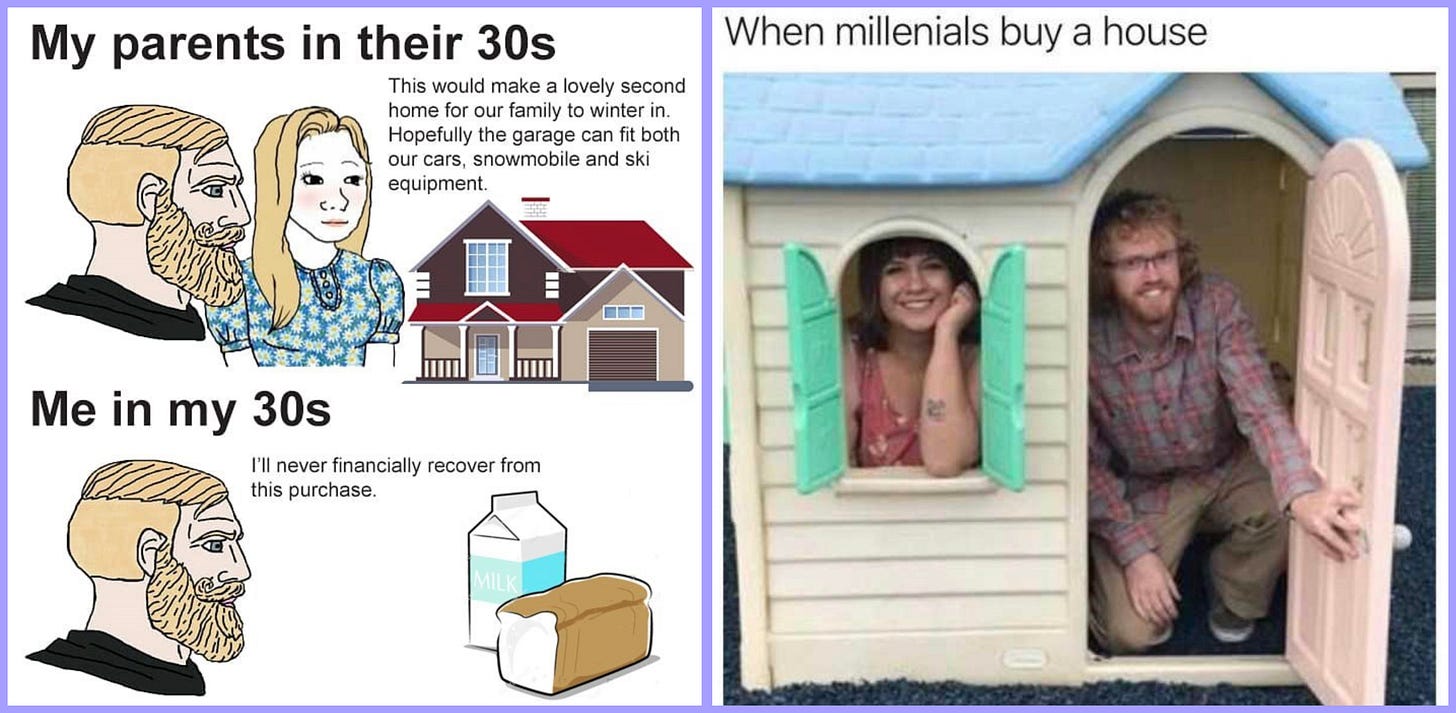

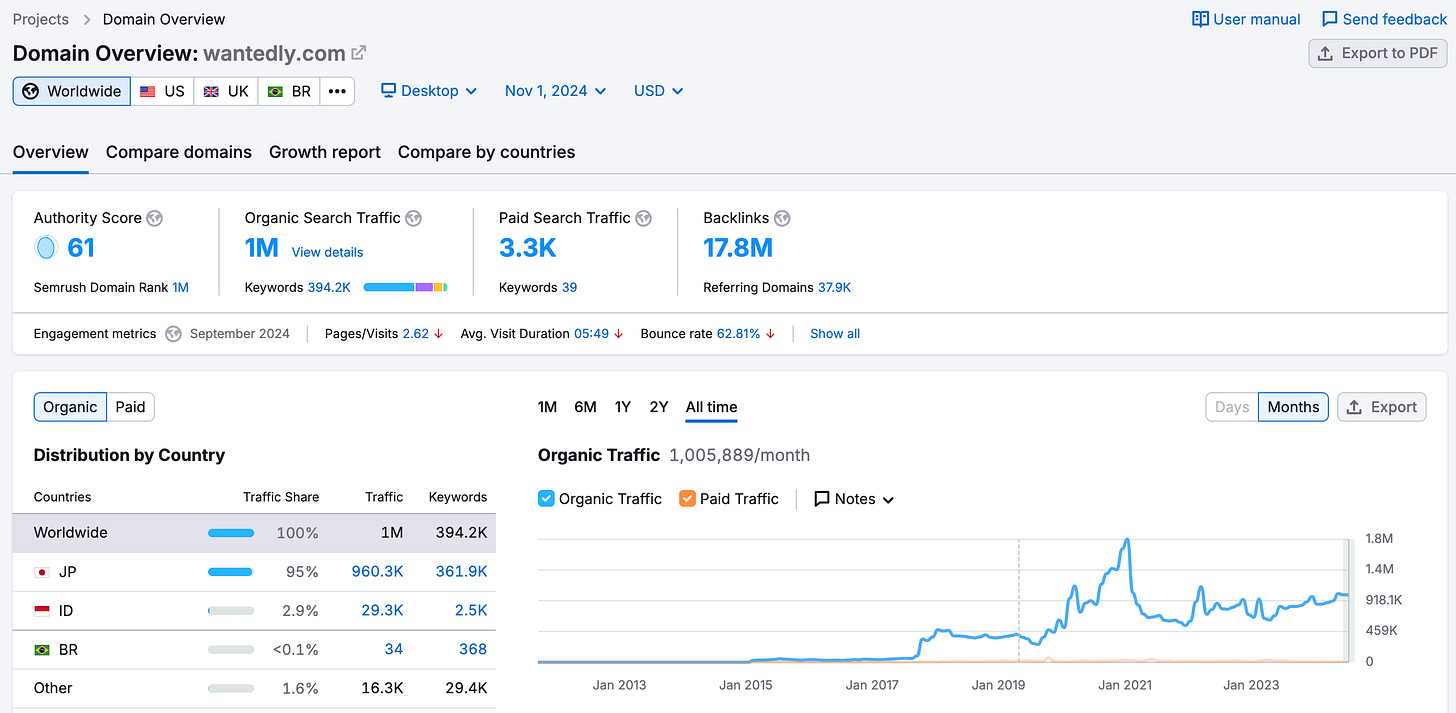


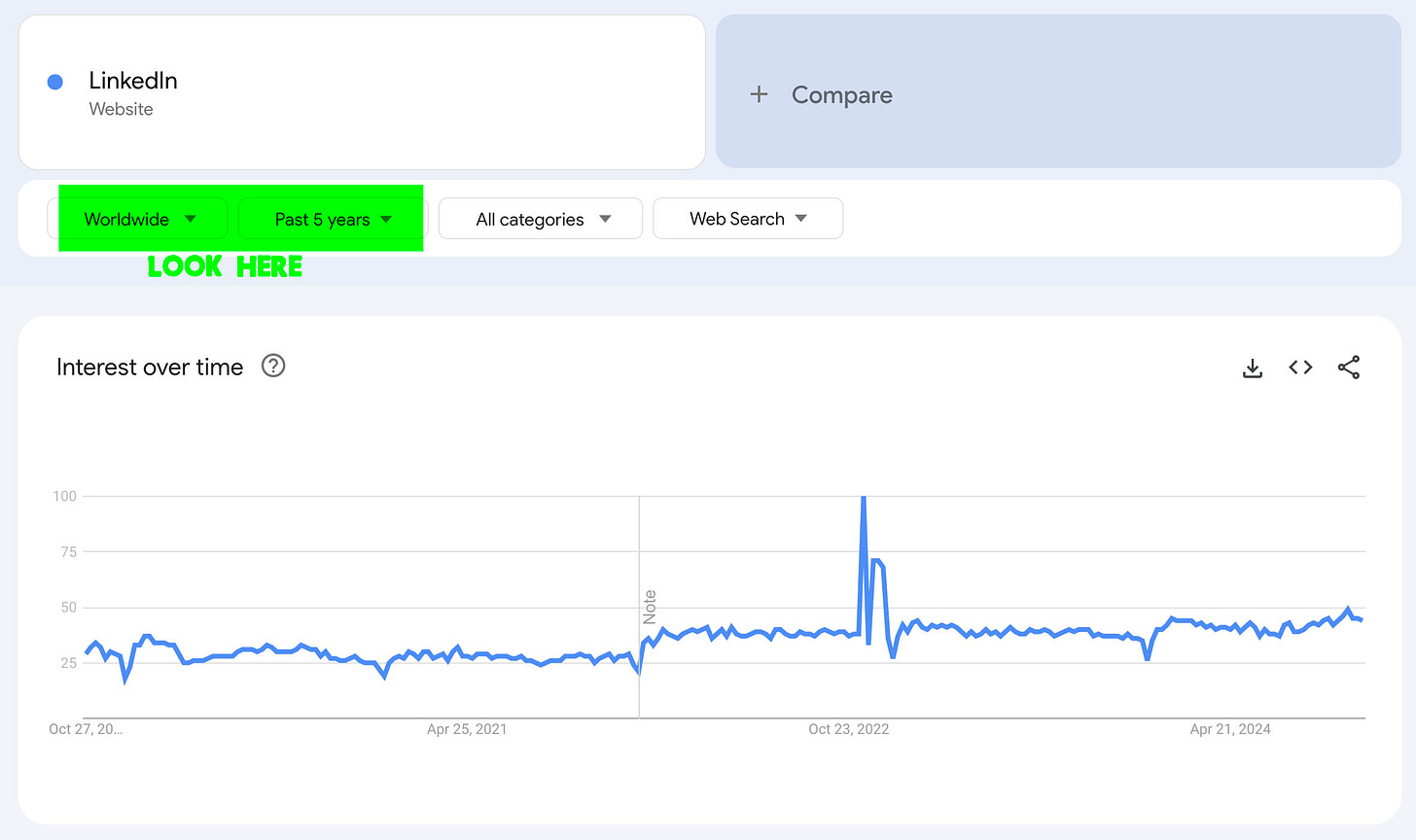
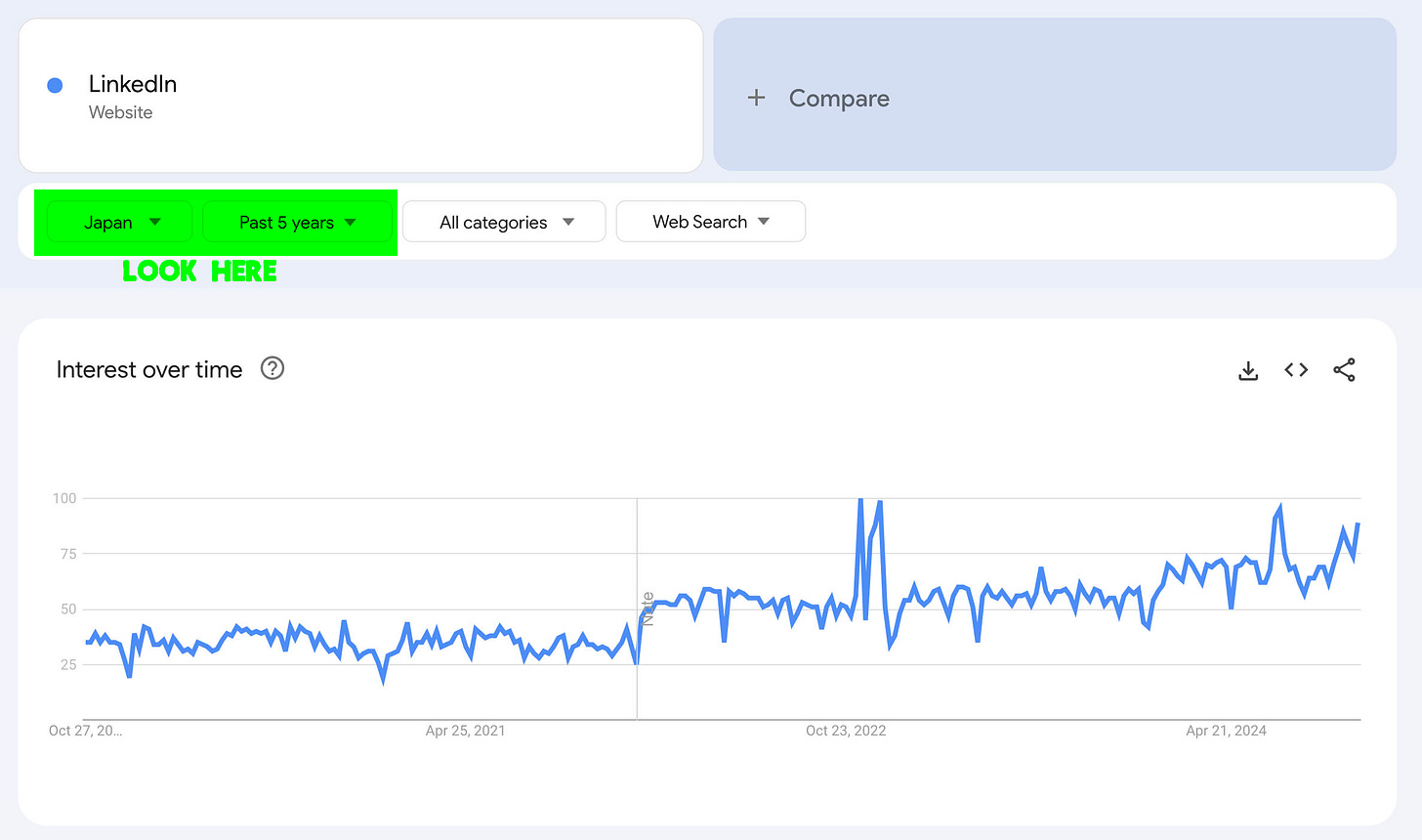












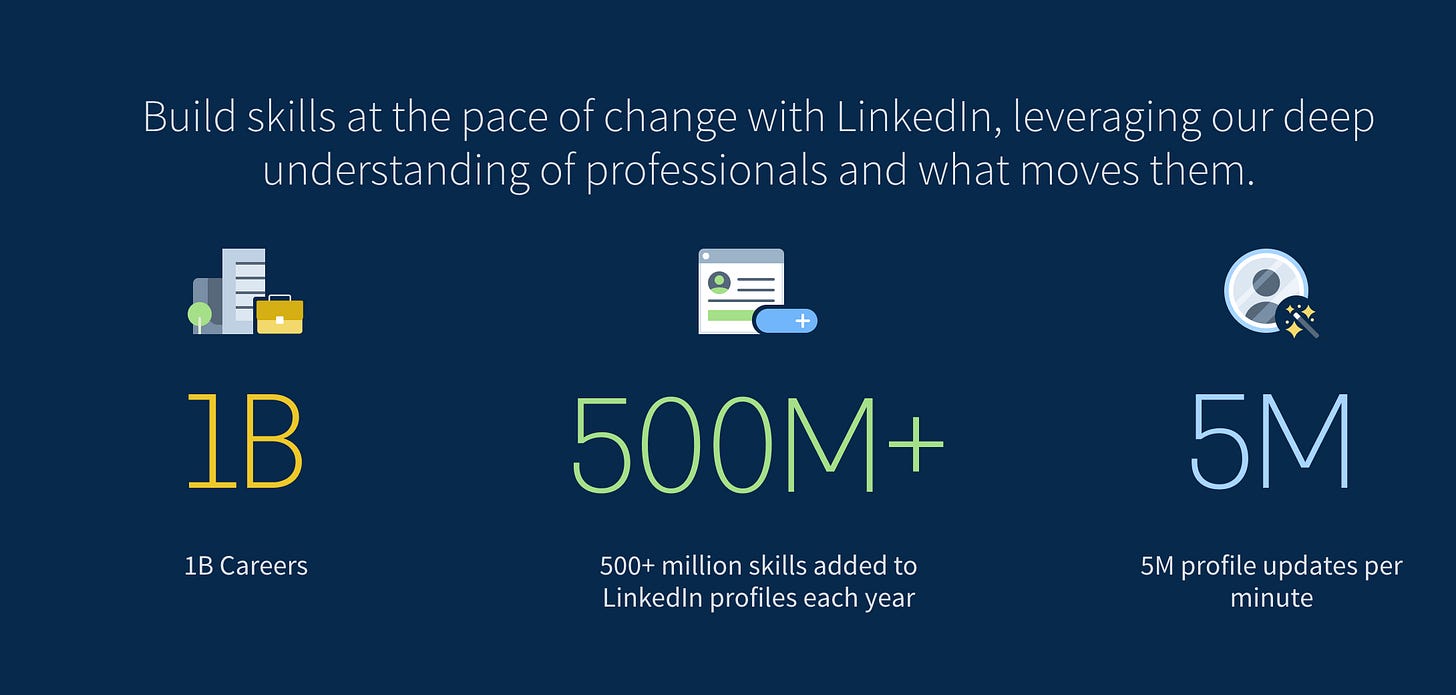


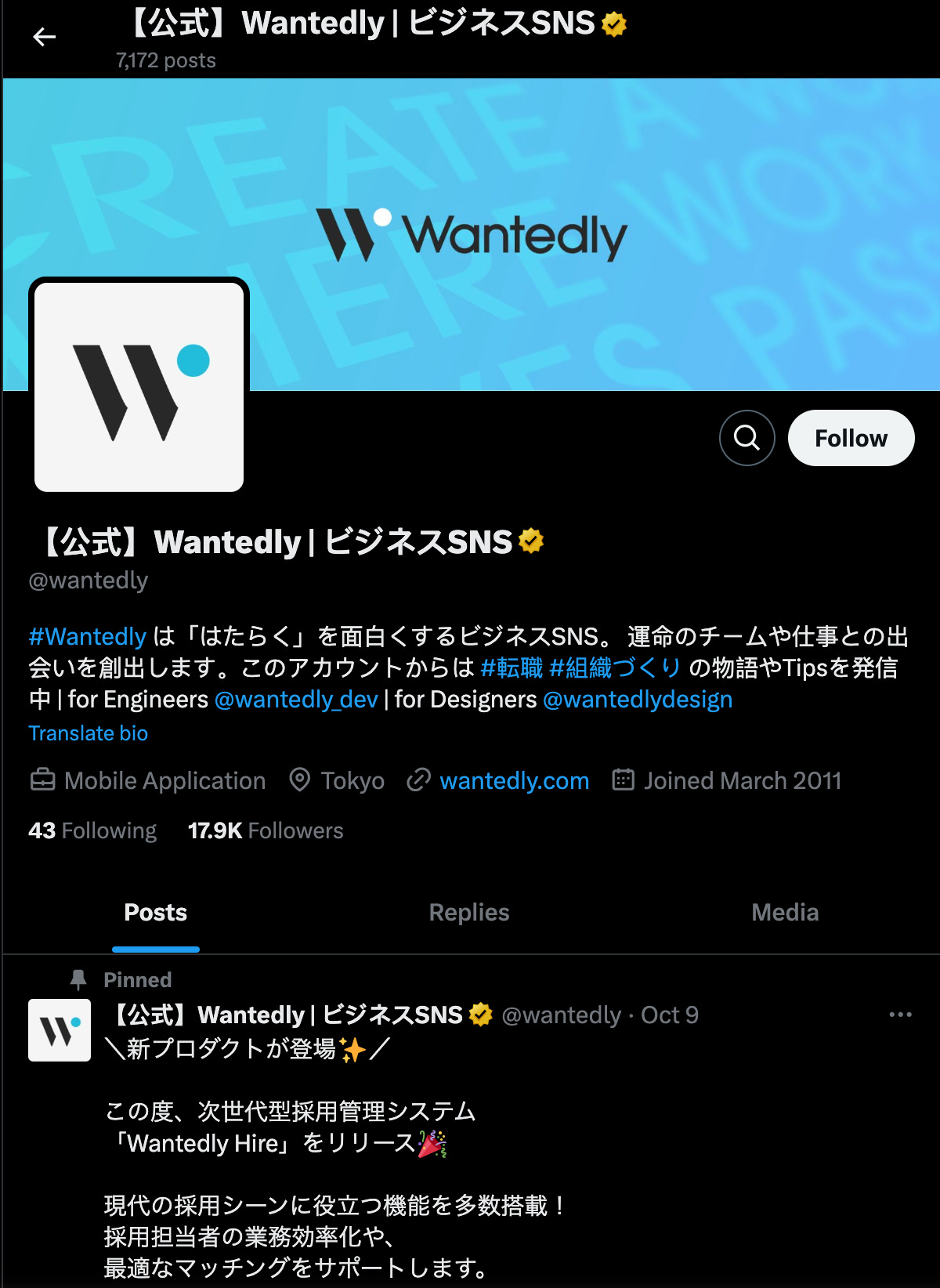

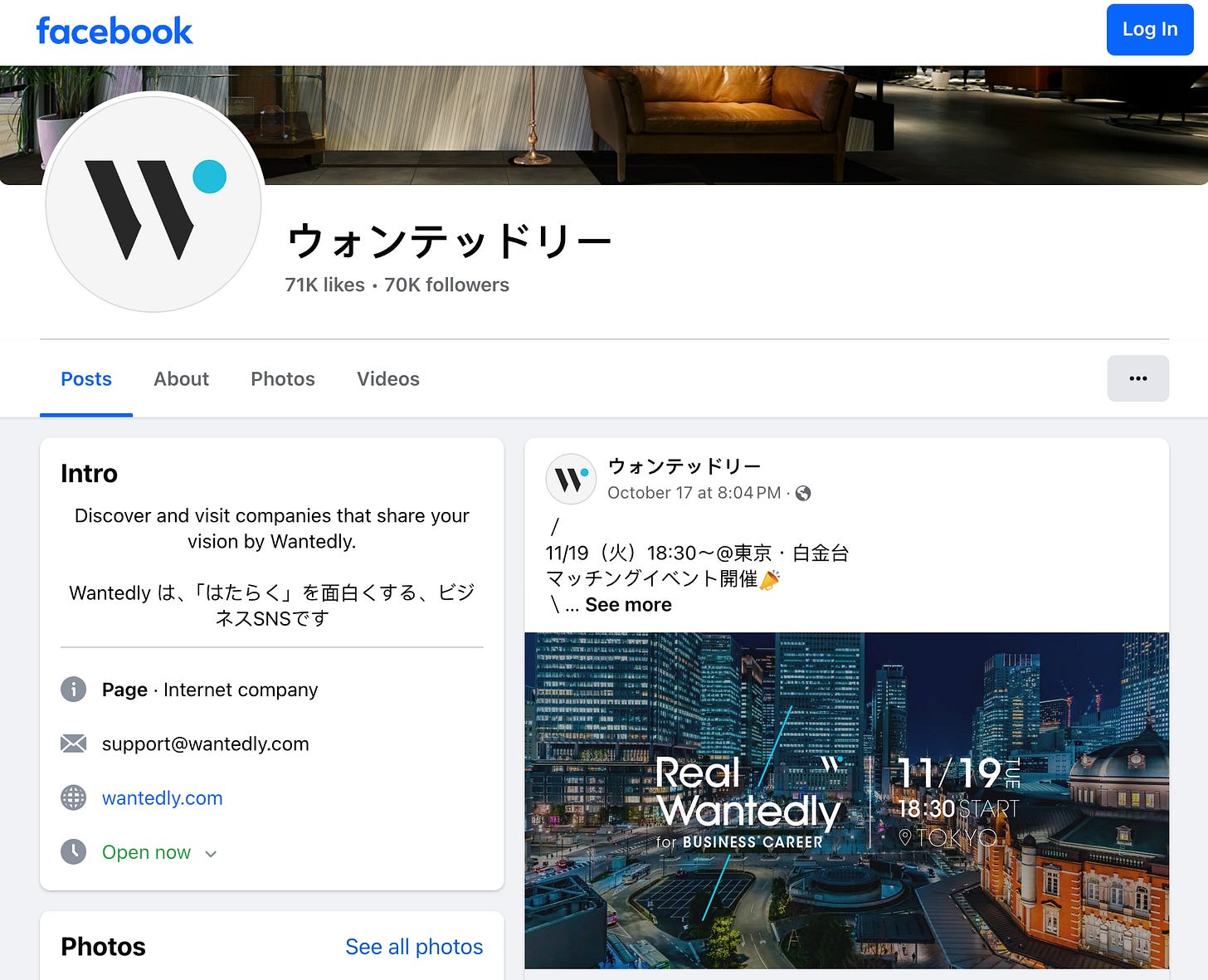

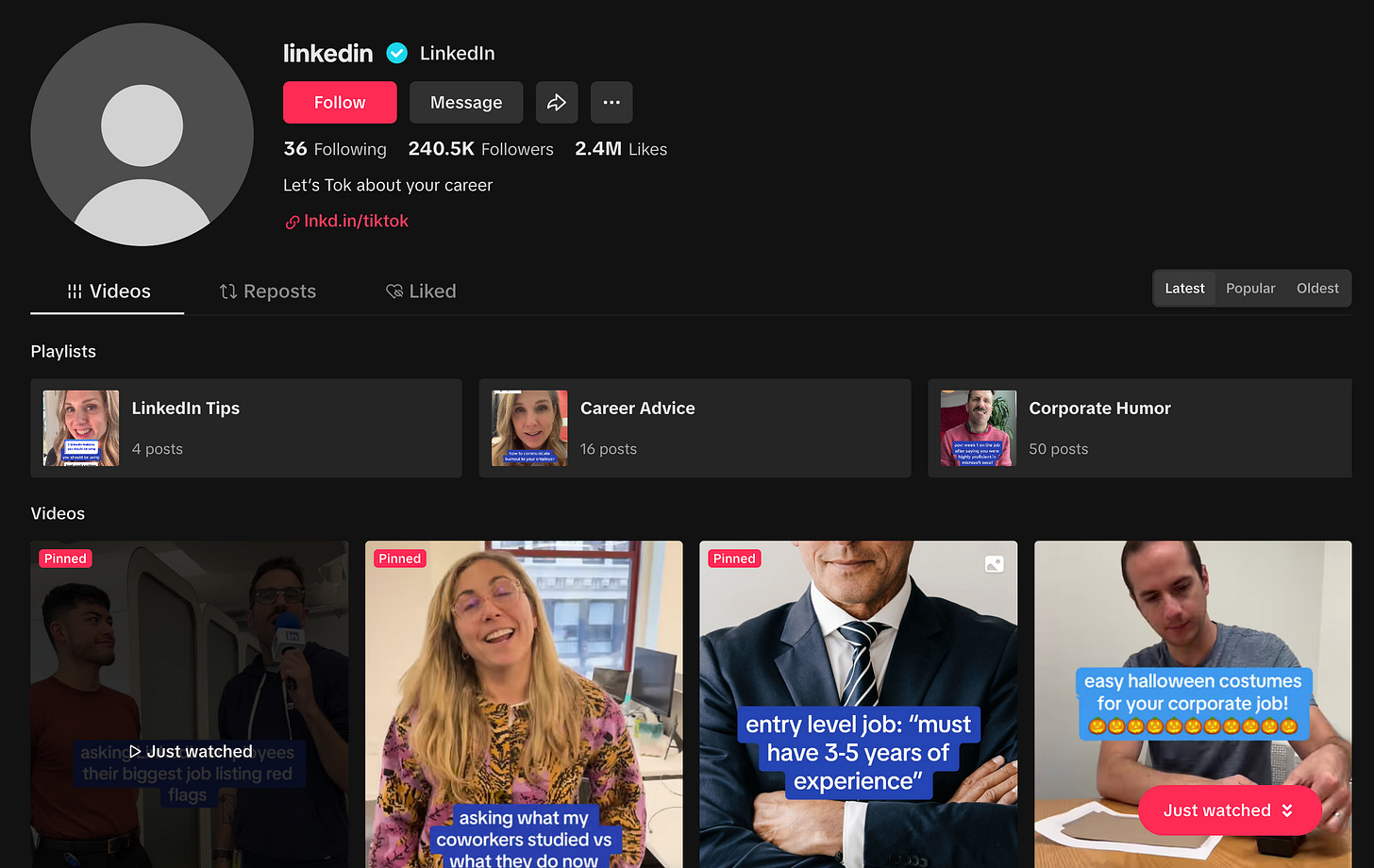

I wonder on how we can incorporate some of the ideals of Wantedly on the HR and corporate culture.